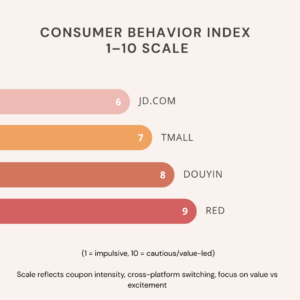The demographics of China are quickly changing, creating new markets to compete over. The silver economy, the sheconomy and sinking markets are 3 of the most heated and underserved battlefronts. Let’s get right into the action:
1) Silver Economy –
Senior Netizens On The Rise

A rising proportion of elderly internet users in China, partly boosted by Covid 19, is propelling the expansion of the “silver economy”. By the end of 2020, 11% of internet users in China were aged 60 or above, up from just 4% in 2016. However, the penetration rate of the internet among seniors (42% as of Dec 2020) remained low compared to 70% overall, suggesting huge potential for this user group.
Products & Content catering to Elderly
Considering the ageing population, China’s Ministry of Industry & Information Technology (MIIT), published guidelines in Apr 2021 for web pages & mobile internet apps to carry out “elderly-friendly modifications”.
Companies are also finding it increasingly important to tailor content, news apps, and designs to the growing cohort of the digitally familiar elderly.
Here are some recent modifications made:
-Senior mode with larger font size and simplified interface (no pop ups or ads)
-Voice commands & screen reader features for the visually impaired
-Family sharing feature on Taobao, allowing kids to pay for products on behalf of parents
-WeChat hosted casual mini-games are becoming increasingly popular among seniors.
– “Mobile Phone 101” courses held by local governments and internet platforms for the elderly to keep up in the fast-moving digital economy
2) Sheconomy

Increasing levels of education, coupled with high labour force participation rate, has helped build a foundation for greater financial autonomy. Delayed marriages and a fast-declining birth rate also mean that the consumption habits of female consumers are undergoing significant changes.
Women in China are spearheading changes in consumption preferences with an increasing emphasis on personal characteristics & quality life.
a) Online Discourse Charting New Paths To Equality
Gender equality has become a growing topic of discussion online. With more women becoming aware & outspoken about their rights, brands are facing the consequence of content deemed sexist or partnering with figures seen as controversial. Simultaneously, demand for content to satisfy the needs of female communities has shot up.
Netizens are speaking out against the sexist behaviour in gaming. Women are also demanding more casual, female focused games

Nanjing university was blasted for publishing sexually suggestive photos to recruit students. The image above reads “ Let me be part of your youth”. Other photos, especially when men held the signs did not feature the suggestive text.
b) Success Of Female Focused Startups
Rising female consumption has boosted several promising ecommerce startups and online brands. The brands share a common focus on the evolving demands of a new generation of female consumers, as well as a strong social media presence to better appeal to the target customer.

For a brand like Perfect Diary, social media platforms like Douyin and WeChat form the pillars of its marketing strategy. Its parent company Yastin Holding raised US $709 mn through its IPO in New York in Nov 2020.
3) Sinking Markets
User Growth, Under Penetration Signal Opportunities

“Sinking markets” refer to the markets of tier 3 or lower cities in rural areas. The share of mobile internet users in sinking markets rose to nearly 60% in 2020 from ~50% in 2018. The steadily increasing internet penetration, plus the ubiquity of smartphones there, has lured internet players to tap into the under penetrated sinking markets.
Sectors At Various Growth Stages

Within sinking markets, there are divergent trends among different sectors. While socialmedia, messaging and videos are close to full saturation with only marginal growth, sectors including, financial services, work productivity, ride- hailing, ecommerce and daily services are still undergoing relatively rapid expansion.
c) New Strategies In Ecommerce & Ride Hailing
In the past we have seen the tried and true method of low price, gamification, localised content and simplified apps, mainly from ecommerce, content & media players, to tap into sinking markets. In the past 12 months, ecommerce and ride hailing companies emerged with new strategies like community group buying, and low-cost hailing to capture users from tier 3 and below.
In Summary, Let Us Ask Ourselves 4 Important Questions
1) How can tech players best capitalize on China’s Shifting Demographics?
No matter which subsector a company chooses to go after, they’ll need to be nimble and capture every new opportunity.
2) Will the ageing & slow growth of China’s population hurt its tech industry?
Seniors are one of the more under-penetrated demographics of China, and the younger cohorts are very digitally active. They are definitely a positive business impact, but businesses will likely need to support them in different ways from other generations.
3)What is the long term impact of rising female consumption & independence?
The growth in affluent women consumers will influence companies to be more thoughtful about how to operate in a more female friendly way – from advertising, to their sales tactics & customer service.
4) Can the fast saturating sinking markets retain their allure?
Whether the sinking markets will turn into another winner takes all segment depends on the type of business. With today’s tighter regulatory environment in China, anticompetitive behaviours are far more likely to be scrutinized and punished than before. So, at the very least we can expect that the market leader will have to pay by fairer rules than in decades before.
Get in touch with Digital Crew, a Chinese digital marketing agency, to target these underserved demographcs with the right strategy.






















